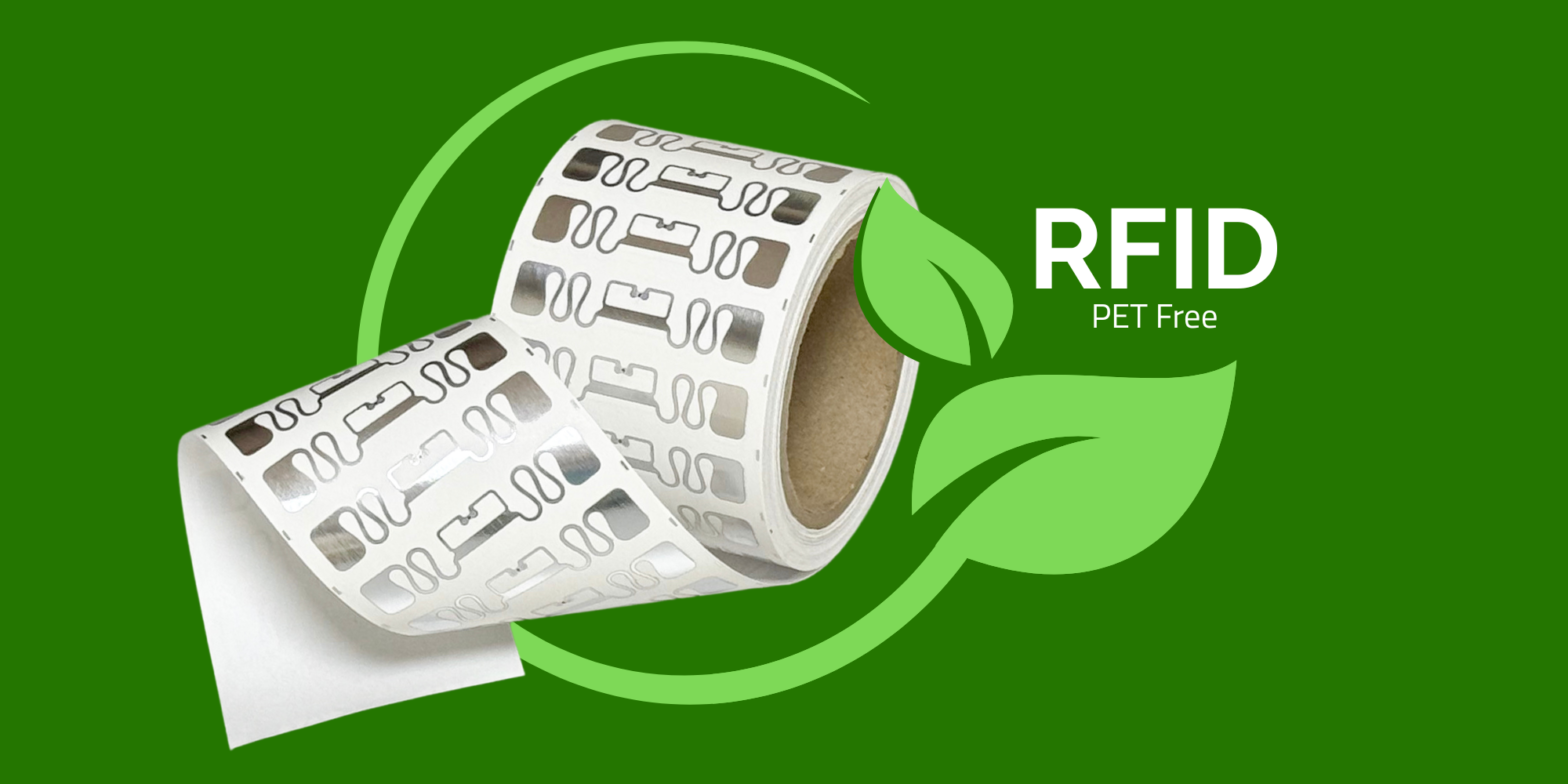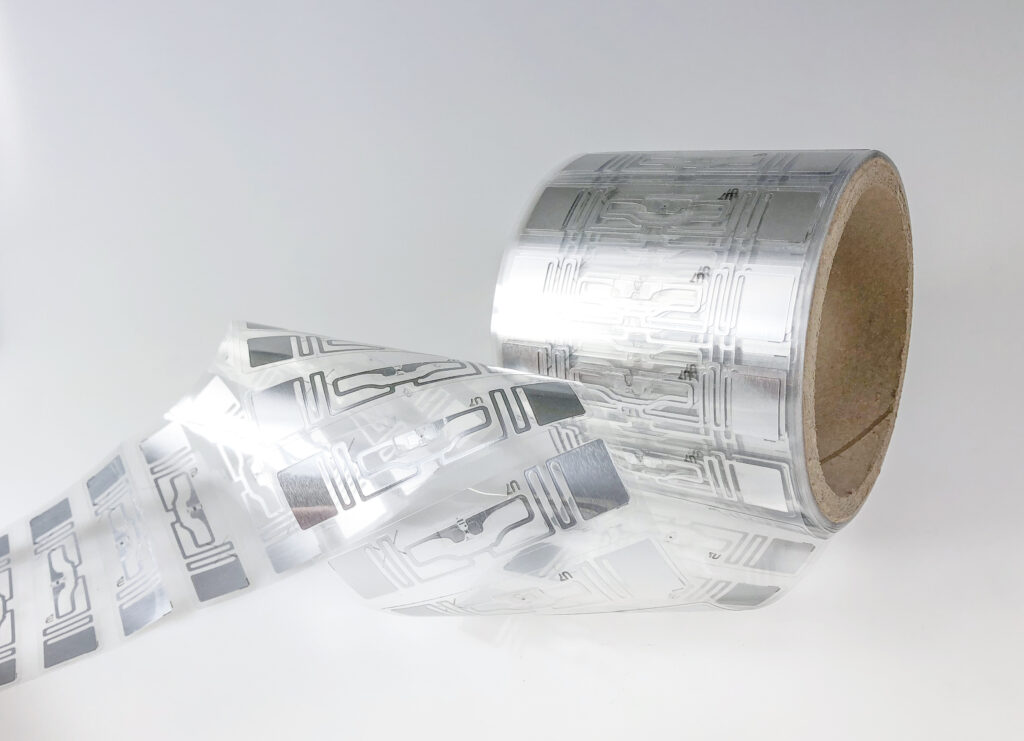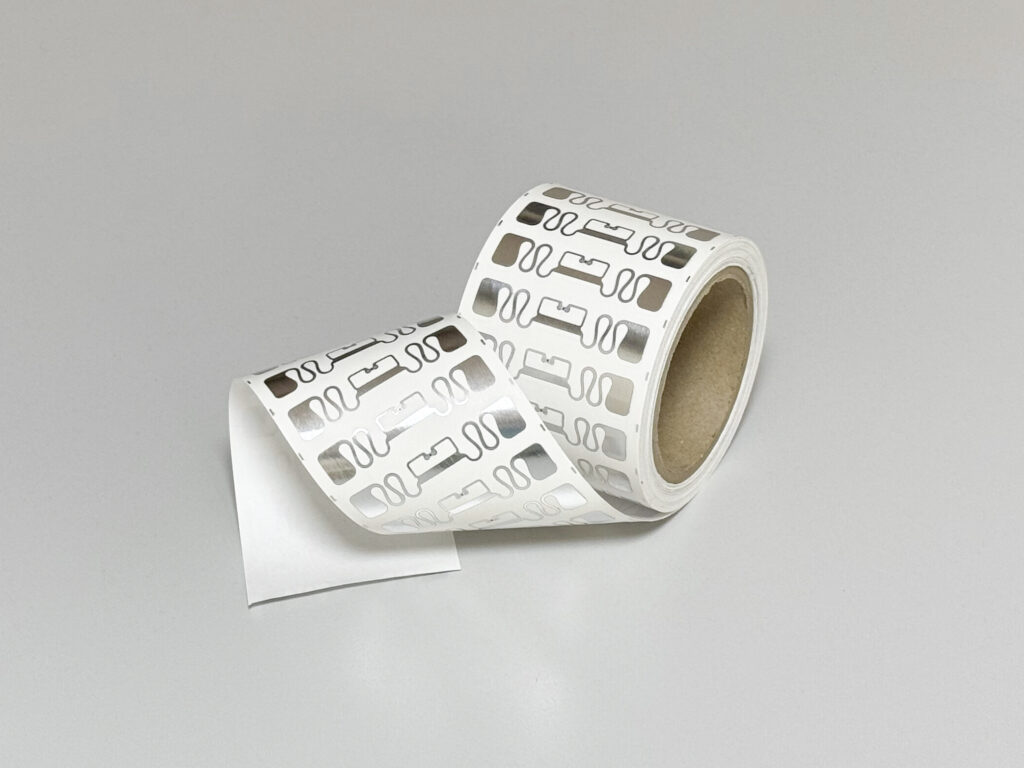
Eco-friendly RFID PET Free tags. Learn about the technology of the future!
RFID technology has been revolutionizing logistics, commerce and industry for years. It makes it possible to quickly and contactlessly identify products, track supply chains or automate warehouse processes. However, classic RFID tags contain an inlay, where most often the aluminum antenna is “printed” on polyester, which poses a problem in terms of recycling and sustainability. In response to growing environmental requirements, RFID tag manufacturers have developed eco-friendly RFID tags. This is a solution to reduce the amount of plastic in RFID tags. One of the most interesting directions is PET Free inlay, where the antennas are “printed” on a substrate that does not contain polyester film.
Eco-friendly RFID tags with a “paper” antenna – an alternative to PET. Construction and technology, or how does it work?

A traditional RFID inlay consists of:
- chip (IC),
- antenna,
- carrier (usually PET film).
In the eco-friendly version, this film is replaced by paper with appropriately selected structure and physical properties. The manufacturing process of such an antenna allows to obtain sufficient conductivity for UHF communication, while maintaining flexibility and durability no worse than in the case of classic tags. One of the methods of manufacturing an antenna on paper is cutting a metallized layer.
RFID basics, or rather facts and myths about RFID
Importantly, eco-friendly RFID tags with a paper tag do not differ in read quality from traditional labels where an inlay on a polyester substrate is used.
Advantages of RFID PET Free Technology

- Eliminate plastic – up to 100% reduction of PET film from RFID tags,
- Increase recyclability – RFID inlay can be recycled along with paper labels and packaging.
- Lower carbon footprint – manufacturing paper antennas uses less non-renewable materials and chemicals.
- Compatibility – PET Free RFID tags are fully compliant with EPC Gen2 standards. They can be read by existing RFID infrastructure.
Where are paper RFID tags used?
The paper RFID label, where the inlay is made on a paper base, is a response to market requirements. It has been successfully implemented in many industries, such as:
- Retail and apparel: product, price and logistics labels,
- Logistics and warehousing: marking SSCCs, pallets, cartons, etc.,
- Food products and eco packaging: integration with biodegradable labels and packaging,
- Tickets, events: short-term applications where easy recycling matters.
Production of eco-friendly RFID tags at Etisoft
Leading RFID tag companies have this type of solution in their portfolio – they appear under various trade names, including: PURETM, ZEROTM, ECO.
The production of RFID tags with a tag on a paper carrier is no different from the production of labels where a “traditional” inlay is used. In a nutshell, during the production of RFID labels, an adhesive layer and liner are applied to the tag/antenna ribbon from underneath, and the face material is applied from above. Such a “sandwich” is cut by rotation like a standard label without RFID.
Are you interested in green RFID tags?
